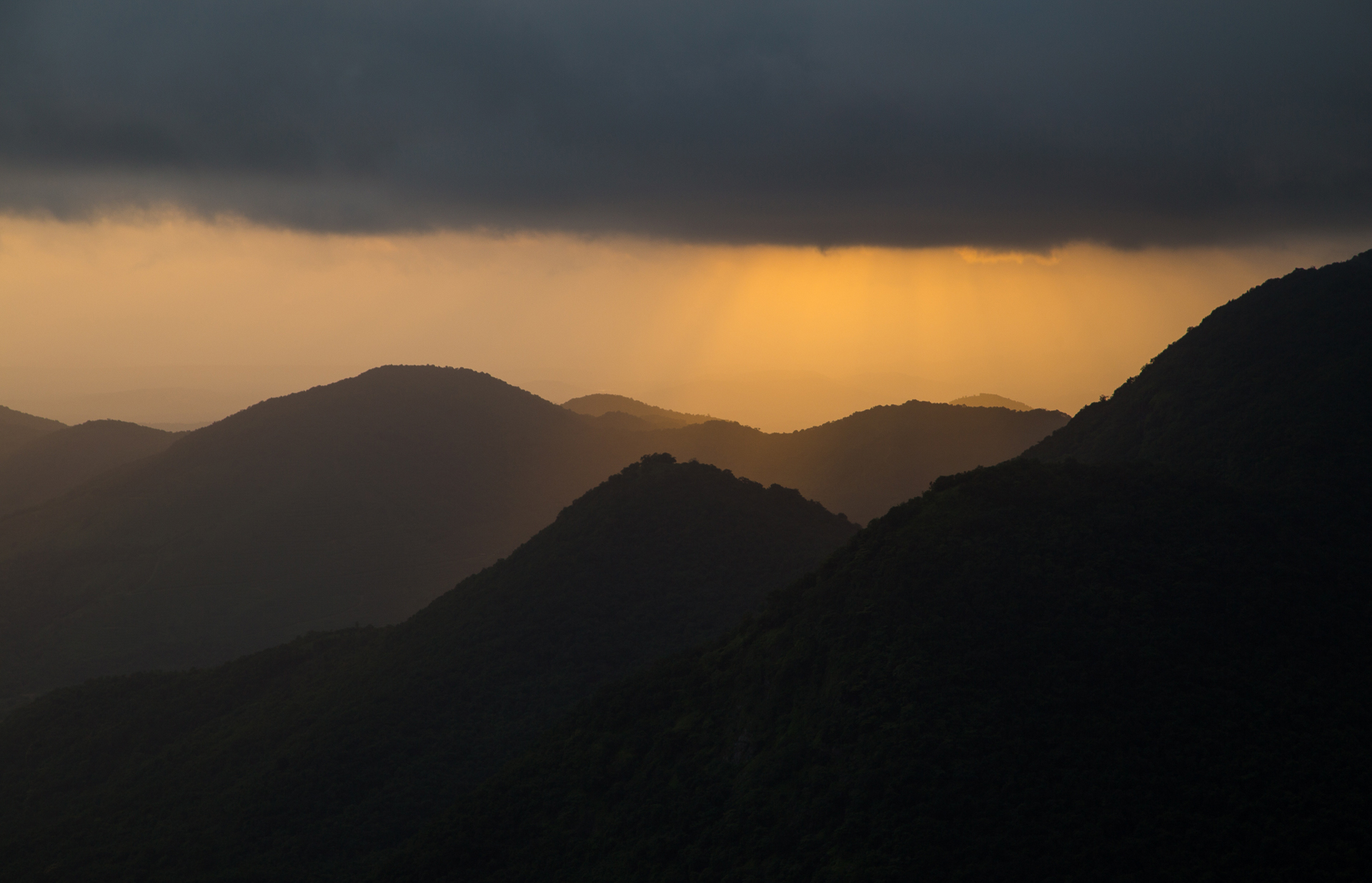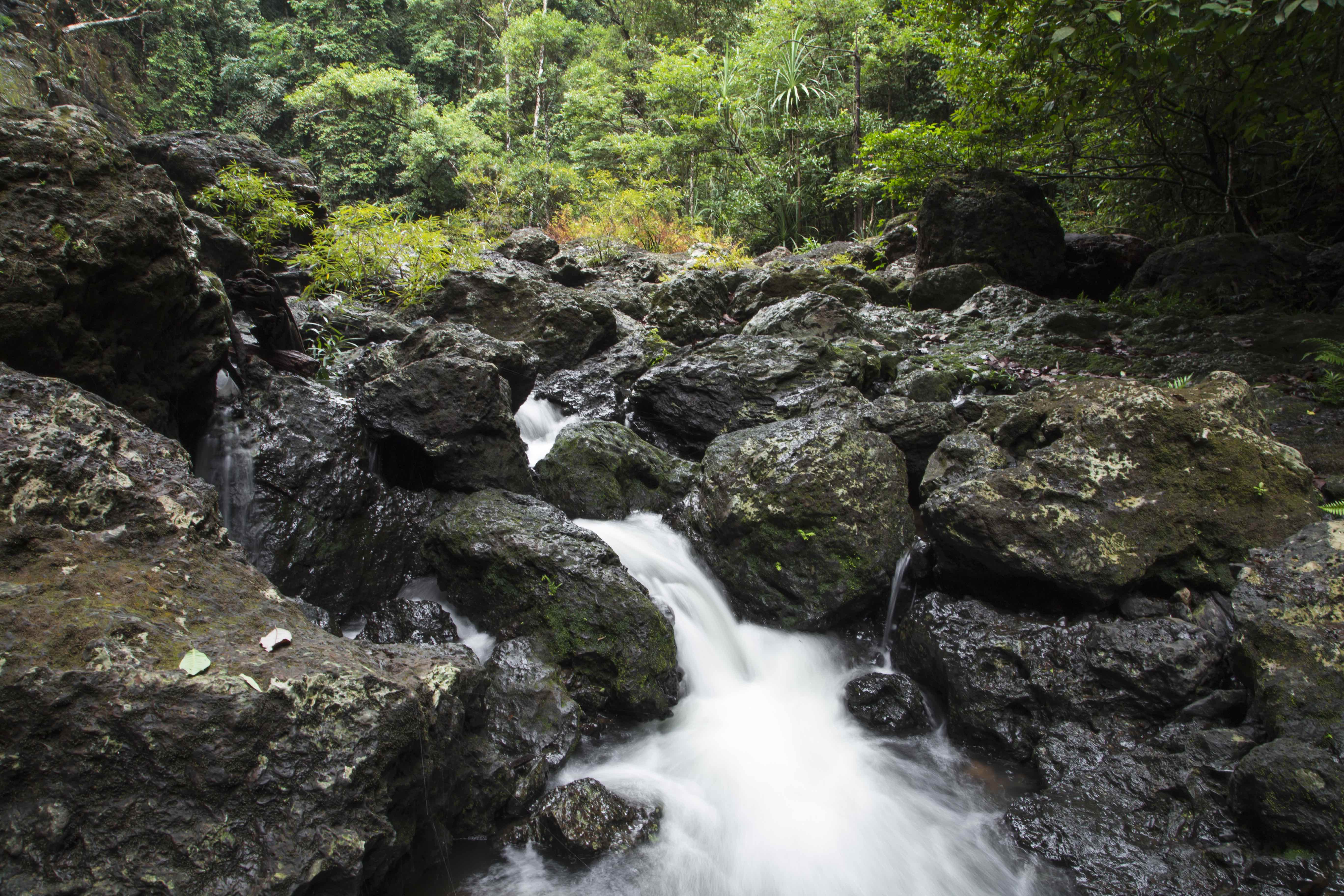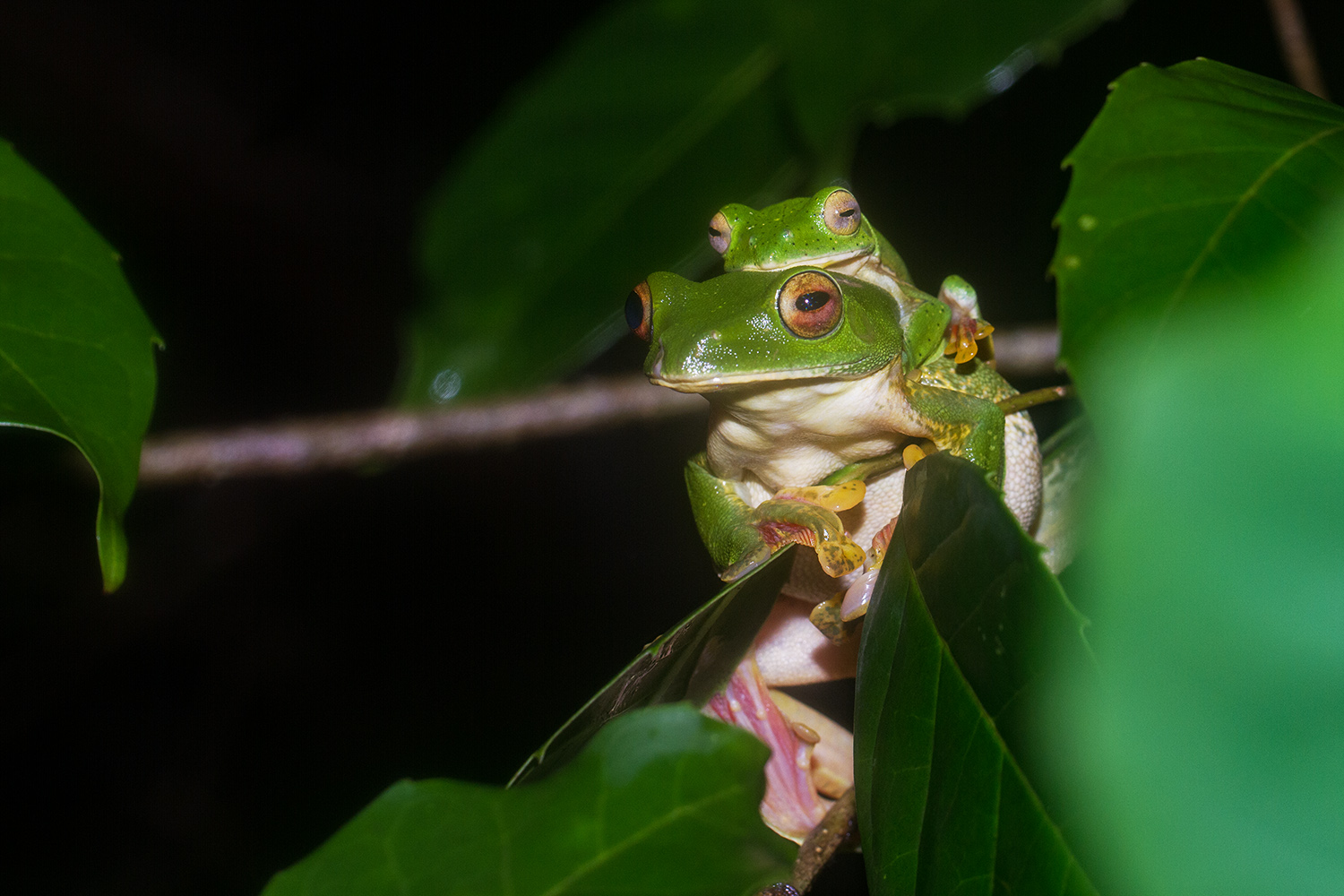A long, green snake was draped around a thin stem. Its leaf-like head was steady as rock, adding to the camouflage. It swayed with the bush in the gentle breeze. One look at its pointed snout and I began to understand where the myth of the “eye-pecking snake” originated. Kan-kutti pambu (eye-pecking snake), the Tamil name for this reptile, has brought it unnecessary censure. After all I had just spent the better part of the morning observing and learning patience from this green vine snake (Ahaetulla nasuta), hiding in plain sight, and had my eyes intact.
It was the first week of June and I was at the Kalinga Centre for Rainforest Ecology, a five-acre field site, in the heart of the rainforests of Agumbe, Karnataka. Having escaped the oppressive heat of New Delhi, my hope was that this village, known to receive the second-highest rainfall in India, would provide some respite. But the southwest monsoon, which normally hits the western coast of India in the first week of June, was late.
Signs of parched earth were everywhere. When I dropped in at Dodda Mane homestay, famous as the filming location for two episodes of the TV series Malgudi Days, I found that they had stopped accepting visitors as both their wells had run dry. My cab driver Pritam, a resident of Agumbe, promised that the patches of dry, red soil along the roads would be overtaken by greenery once the rains arrived.

Rain clouds play hide and seek above the Western Ghats. The changing climate due to deforestation has resulted in a delayed monsoon and a deficit of rainfall in Agumbe, known to receive more than 7,000 mm of rainfall annually. Photo: Saurabh Sawant
On my first day in Agumbe, as I admired the view from the Aaki Battha Rashigudda peak, I saw heavy, grey clouds looming at eye level. Despite the predictions from the India Meteorological Department (IMD) to the contrary, I was hopeful that the rain would arrive in Agumbe before I left. Sure enough, the following day, while I was walking along the banks of the river Sitanadi, a rebel cloud burst, and it poured for 15 minutes.
While mulling over what to do after lunch on day three, I suddenly heard rolling thunder, indicating the arrival of pre-monsoon showers. A steady, downpour ensued, lasting two hours. All the residents of the Centre assembled in the dining hall looking very happy. We listened to the sound of the rain soaking the rainforest around us. As it cleansed the forest, it also woke it up.
Croaking frogs were soon inviting us into the jungle, and I could hardly wait to follow a trail to a stream behind the Centre, that I’d heard so much about. Once the rain abated I set off. In my excitement I forgot to wear my leech socks. Five minutes into the trail I was horrified to see the blood-sucking parasites crawling up my legs. I rushed back to my tent, tied the protective socks at my knees, and headed back resolutely. Skittering frogs, visibly delirious, dived into pools, a Roux’s forest lizard perched itself on a rock, seemingly enjoying the drenching. The stream was a scene of calm. I settled on a rock and absorbed the sights and sounds of the forest. A common kingfisher inconspicuously landed on a nearby rock. The small fish swimming by my feet were the obvious reason this beautiful blue-and-orange bird was lingering at the spot. Unfortunately, it took off — a flash of turquoise over the water — when I made a sudden movement to flick a leech off my arm.

Monsoon streams such as these are usually a scene of calm. But they become a hub of activity for the residents of the rainforest after a spell of rain. Photo: Chetana Purushotam
Birds were creating a racket in the thick canopy, and I wasn’t surprised to see a pair of restless, greater racket-tailed drongos prancing about. Their wide repertoire of calls made me wonder whether they are named after the racket-shaped feathers in their tails, or the clamour they create in the jungle’s upper canopy. Meanwhile, in the distance, I watched a snake languidly start to cross the stream, only to change its mind midway and return to its original bank.
Started by a rustle in the undergrowth behind me, I turned around and spotted an Asian small-clawed otter, the smallest of 13 otter species found in the world. It crossed the stream, less than two metres away. A grey, whiskered face inspected me for the briefest moment. I had most likely disturbed it while it was hunting its primary prey, crustaceans and molluscs. It disappeared into the bushes before I could I reach for my phone and take a photograph. I was not disappointed, however, for I knew it was a sighting that will remain imprinted in my mind forever.

Agumbe is famous for its waterfalls. The Jogigundi waterfalls is one among several in the region which spring to life during the monsoon. Photo: Saurabh Sawant
With a beaming smile on my face, I walked back to the Centre. On the way, I wondered which local waterbody the stream fed. The Barkana, Kunchikal, Jogigundi, Onake Abbi, and Koodlu Theertha waterfalls, all offer spectacular views of the Western Ghats, and are at their spectacular best in the monsoon. One look at my face told Prashanth, the manager of the Centre, that I had seen something special. He confirmed that I had been incredibly lucky to have seen an otter at such close quarters.
That night Prashanth organised a night walk that I eagerly joined. A forest orchestra was underway as night fell, with tree frogs and crickets competing in the nocturnal symphony. We had barely walked for five minutes when Prashanth flashed his torchlight towards a net-casting spider, hanging by a silk strand in its customary pose, waiting for unsuspecting prey to pass by. Skittering frogs, busy in the daytime, were having an equally busy night. A gerbil hurriedly tried to scale the mud wall on one side of the path. The wall was laced with burrows of tarantulas and scorpions, which slid back in at the slightest disturbance.
A pair of Malabar gliding frogs was in amplexus (mating position), oblivious to snakes out on the hunt. We saw a cat snake with beautiful, ornate markings on its back, and numerous vine snakes and pit vipers as well — all seeking a quick meal. Agumbe is a hotbed of snake activity and over 71 species have been recorded there. Much like their prey, they are most active during the monsoon. Clearly, this was going to be one very active food chain over the next four months.

A male Malabar gliding frog grabs a female’s armpits. These mating frogs will beat their legs to form a foam in which the female lays her eggs. Photo: Shreeram MV
